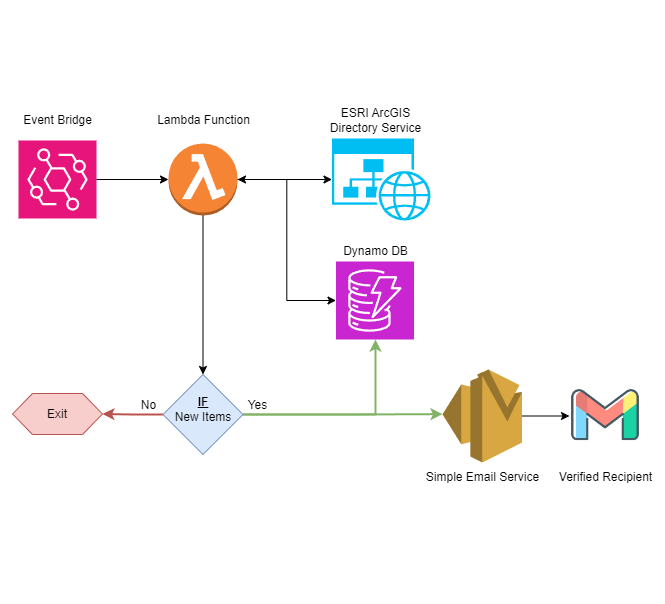System Outline
This is another extension of the “AWS Area Eligibility API“ project in that the data used for my analysis gets published annually to an ArcGIS data repository. This last year FY24 I was late in updating the analysis because I was not checking for new data releases, and I had almost forgotten about it. On the repository page there is a link to an RSS feed but that appears to be for a generic feed that was never set up. So, the question became how I can monitor the repo for new data without having a built in feed or relying on myself to remember to check periodically.
This led me to writing a lambda function that pulls the list of available data layers and stores it as a list inside of the NoSQL database that hold the analysis results. Each time it runs it then pulls the list from the ESRI ArcGIS Directory Service and the database and compares the two. If there are new items in the ESRI directory it will update the databse entry then use the Simple Email Service (SES) to send a notification to my Gmail account with the name of the new layer.
This is all well and good but in order to prevent me from having to remember to run this code I set up a scheduled event in the AWS EventHub. This scheduled event triggers the lambda function to run, perform its check and notification if needed, then exit until the following day when it triggers again.
